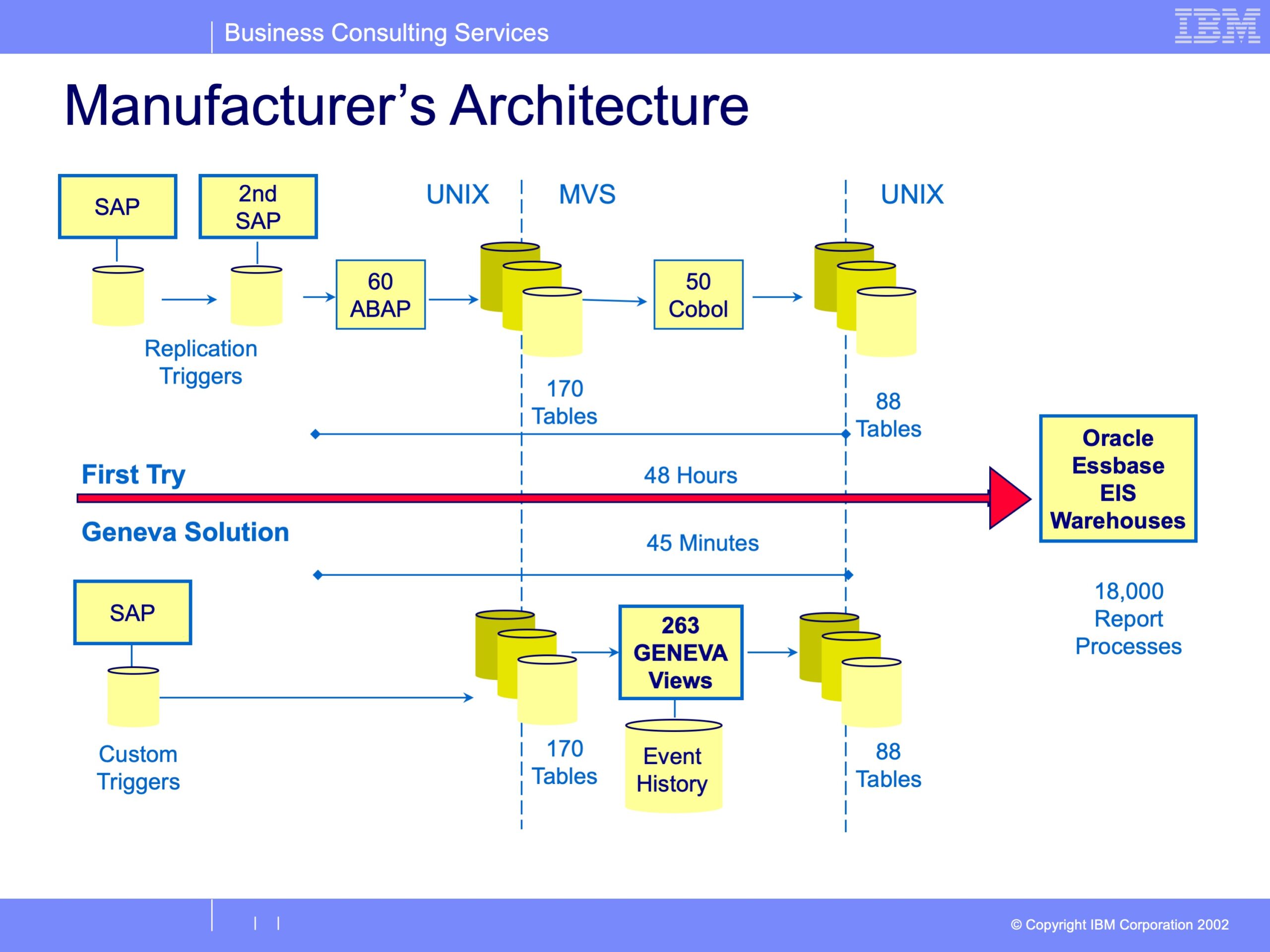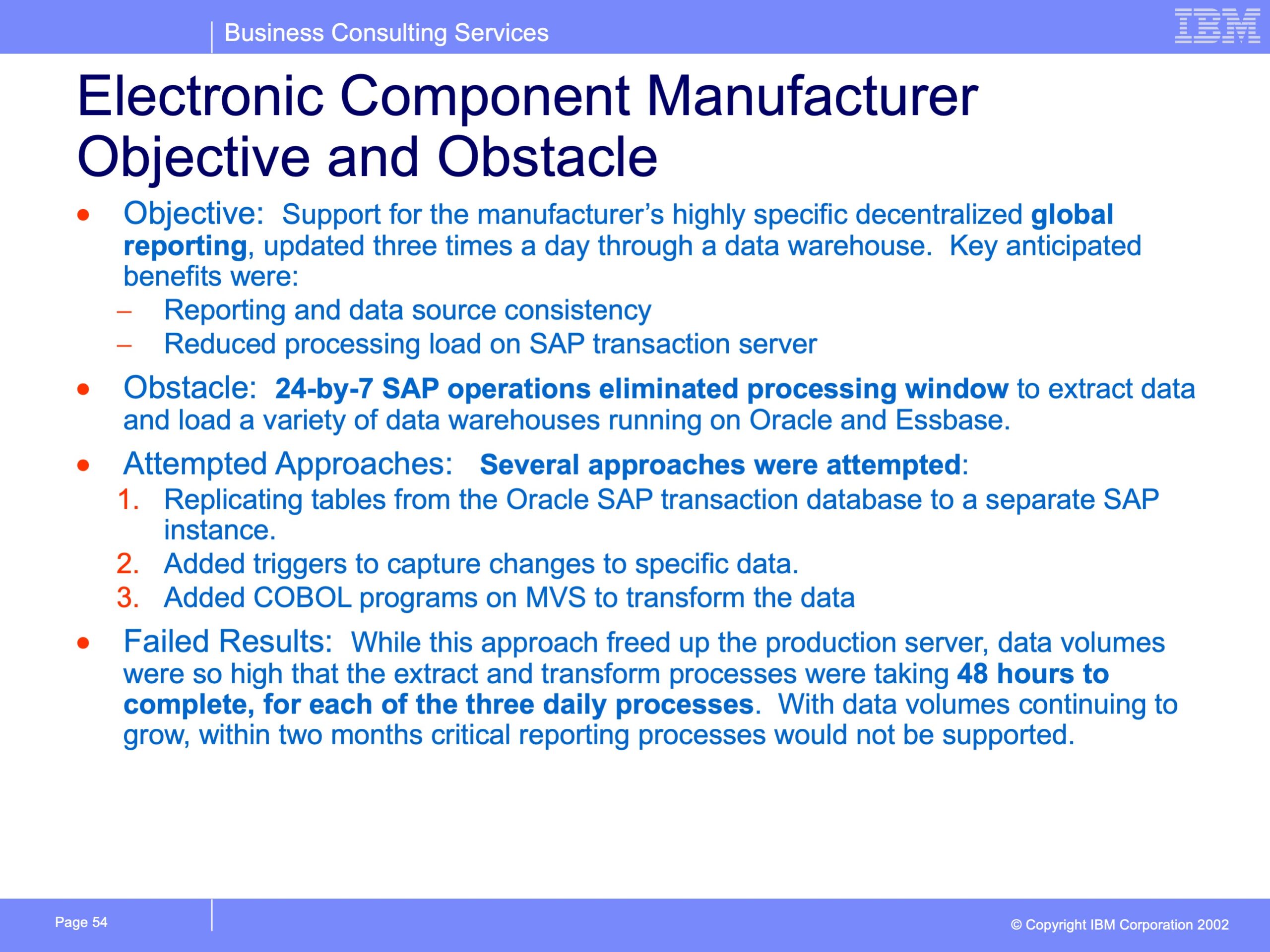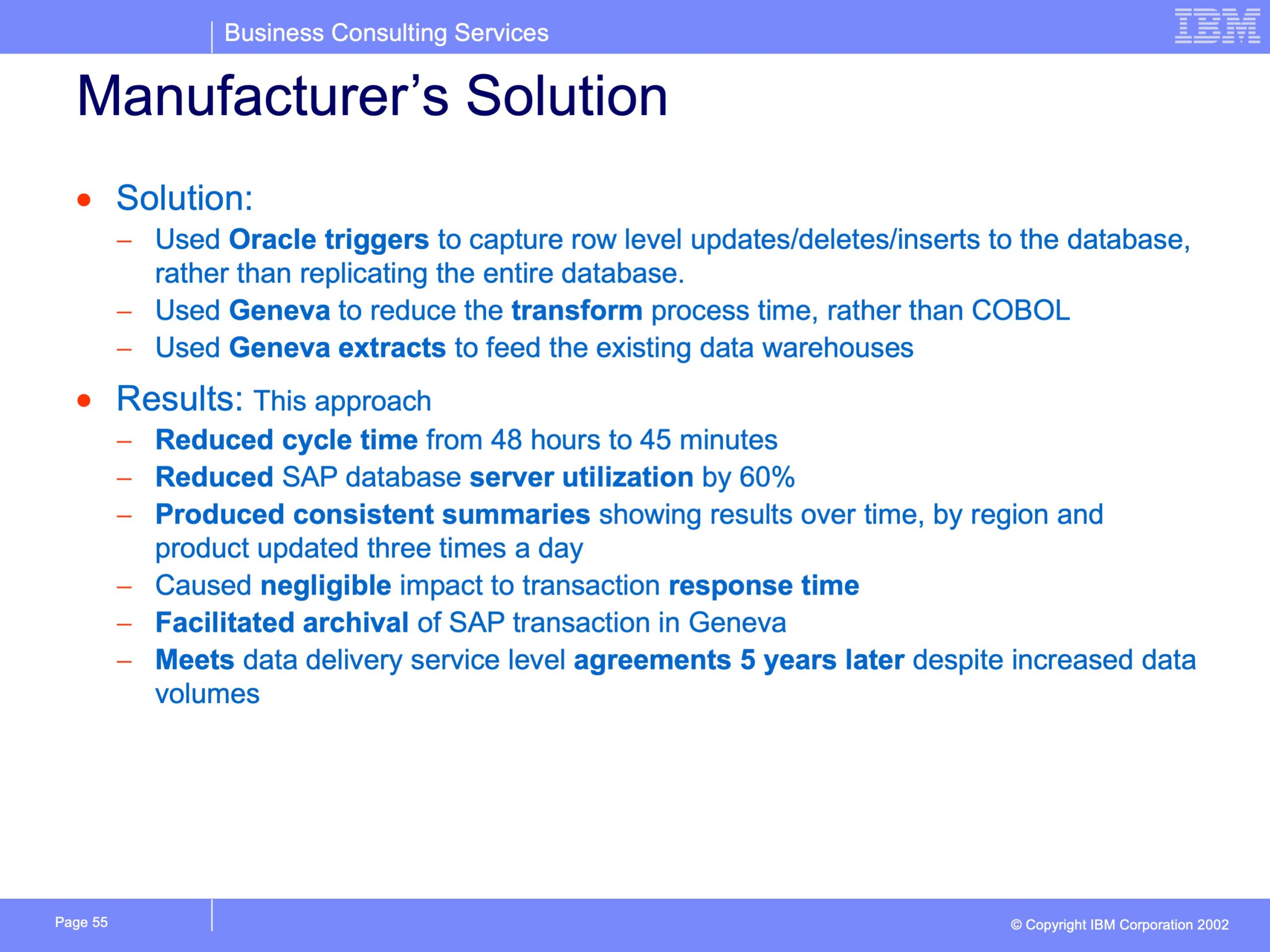
After this Fortune 100 firm implemented multiple SAP modules, they tackled the problem of analyzing all the integrated data captured by the new system. But running the SAP processes 24 hours a day, 7 days a week left very little time for anything but transaction processing. They needed their data warehouses updated three times each day to reflect the close of business in each of its worldwide operations. An innovative solution would be required, and it took a few attempts to find the right one.
One approach might have been to simply analyze the data in the production database. But the potential disruption of transaction processing ruled this out. There was simply no room for analysis in the transaction-processing environment.
Another approach involved replicating tables from the Oracle SAP transaction database to a separate SAP instance. This was supplemented with third party software to capture changes to specific data. After extracting the data, custom programs were used on other processors to complete the data transformation. The data was then loaded into a variety of EIS and data warehouse applications. While this approach freed up the production server, data volumes were so high that the extract and transform processes were taking 48 hours to complete for each of the three daily processes. They were getting farther behind the harder they worked!
The company turned to Geneva ERS for a solution. To shorten the data extract process, database triggers were used to capture just updates, deletes, and inserts to the database rather than replicating the entire database. To reduce the transform process time, the transformation logic was translated into GenevaERS “Views” supplemented with custom programs. This approach cut the elapsed time from 48 hours to 45 minutes without impacting the production system.
The company also found some unanticipated benefits as well. The Genera ERS solution provides a detailed repository of historical data for analysis. This data can be stored in the Geneva environment and archived from the SAP tables, thus improving the transaction system performance. New types of detailed analysis were possible using Geneva and the process has proven itself scaleable as the company continues to grow.
Since the first implementation, the company has employed GenevaERS in several different systems, and has used it to replace many data analysis processes originally coded in SAS. After reconfiguring one SAS application with Geneva, the end users were able to slash eight hours off of the delivery time for their reports.
A typical execution of GenevaERS at this client reads 100 million records, performs 1.2 billion foreign key joins across 2.2 gigabytes of table space. It writes out 100 million records in 70 user extract files. This process takes just under an hour of elapsed time and 73 minutes of CPU time.



More about this time can be read in Balancing Act: A Practical Approach to Business Event Based Insights, Chapter 21. ERP Reporting and Chapter 37. Maintain Focus.

